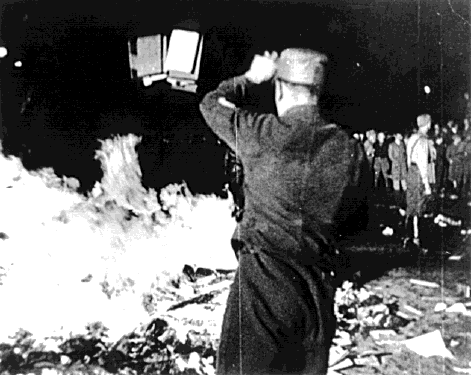|
KATLENBURG AND THE 'PULP FICTION' OF GERMAN REUNIFICATION Edward Mackinnon
On a map of Germany, Katlenburg lies pretty much in the middle. It's a small village just to the west of the hills and forests of the Harz region, through which, prior to reunification, the border between East and West Germany ran. The absorption of the GDR into the Federal Republic has not had any noticeable effect on Katlenburg. For the population of the GDR, reunification meant first of all the dismantling of the Wall, freedom of movement, and the introduction of the German mark. Then came western-style democracy (though the obtuse people of the East have persisted in voting in large numbers for the successor party to the old Socialist Unity Party), the exposure of the nefarious practices of the secret police, the Stasi (the lid has not yet been lifted on the corresponding activities of West Germany's intelligence services), and the selling-off of East Germany's publicly-owned industry at bargain prices by the West's privatisation agency. For the population of the GDR, as happens in any major political and social upheaval, reunification meant new opportunities for some, and for others the destruction of their lives. While the infrastructure has been improved and buildings have been spruced up, the area as a whole has been suffering from the three A's of Arbeitslosigkeit (unemployment), Alkoholismus and Auswanderung (emigration). In the immediate aftermath of the "turnaround", as this upheaval is referred to in Germany, people in the East frowned upon everything eastern. (Before long this would change, and Ostalgie, or nostalgia for the East, would emerge, as typified by Wolfgang Seeker's highly entertaining film Goodbye Lenin!). Everything made in the GDR was regarded as inferior and where possible was quickly got rid of. Books, for example. The "logical" response here was to dispatch vast quantities of them to rubbish tips for mass shredding. This brings us back to Katlenburg. The Lutheran pastor of this sleepy village, a certain Martin Weskott, was not only a man of God but also an avid reader of good literature. He was aghast, therefore, to learn that hundreds of thousands of books were being pulped in the former GDR. His reaction was to hire trucks and head eastwards to the rubbish tips to save what he could from destruction. These books he men transported back to Katlenburg, where he stored them in a large barn adjoining his parish church on the hillside overlooking the village. Over me next few years he replenished his stock by contacting libraries and educational institutions in the East that were assiduously disposing of their books. Pastor Weskott advertised the books for sale and donated the proceeds to famine relief in the Third World. Charity, however, was only one of Martin Weskott's motives. He was dismayed to discover that works by authors like Heinrich Mann, whose books had been burned by the Nazis in the 1930s, were now being destroyed again, albeit in different circumstances, and was saddened to see GDR authors apparently being condemned to oblivion in the new political climate. So as well as saving what books he could, he also began to organise readings in Katlenburg by authors from the East in an effort to make them better known in the West, readings which continue to this day. The whole Katlenburg project, therefore, was undertaken in a spirit of promoting true unification. Unexpectedly, Katlenburg has also made a contribution to international space research. One of its rescued books has been vital in building an integral part of the Cassini orbiter that together with the Huygens probe is exploring Titan, one of the moons of Saturn. A spectrometer on the Cassini/Huygens spacecraft required the use of an amplifier made of a composite of glass and a ceramic. The problem was that modern Western ceramics, such as oxides of beryllium or aluminium, scarcely expand or contract when the temperature changes, whereas glass expands a lot when the temperature increases. So a composite of glass and a modern ceramic would simply split at the join as the temperature changed. What was needed was an old-fashioned ceramic with similar temperature/expansion properties to glass. Eastern European countries had used such ceramics. But of course the relevant books had been thrown away. Who would still have a book containing a recipe for the required type of ceramic? Pastor Martin Weskott in Katlenburg,of course. Last summer, on a visit to the Harz region, I stopped in Katlenburg to take the opportunity to browse and buy, and was able to see with my own eyes the folly of throwing away good books, not only works by German authors, but classics of international literature. English literature was well represented too: Dickens, George Eliot, Hardy, Wilde were all there among the precariously stacked books in the former barn next to the Lutheran church. I was pleased to acquire a hardback copy of Anna Seghers' marvellous anti-fascist novel The Seventh Cross. It contains the stamp of a technical college in a place called Leutenberg, Thuringia. I can only hope that the spirit of Anna Seghers has not been banished entirely from that educational establishment and that its students are still reading some literature of real worth, and not just pulp fiction.
|
